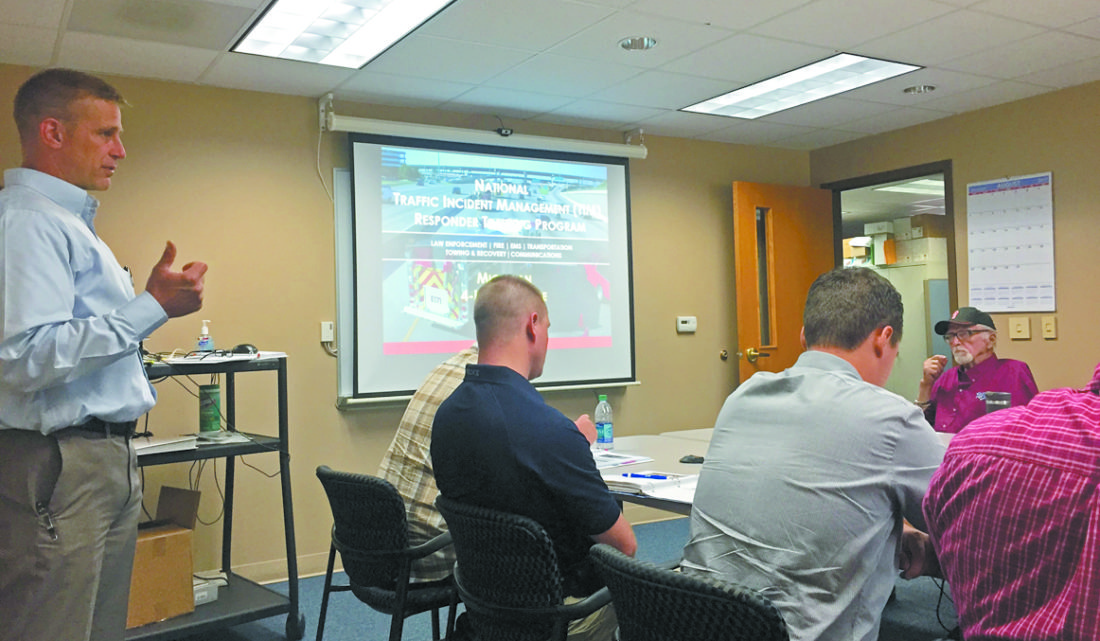From road design to training, MDOT focus is on safety

MARQUETTE — The Michigan Department of Transportation has implemented a number of projects across the Upper Peninsula designed to make highways safer for the people who drive – and work – on them.
MDOT safety projects are part of a larger effort to help move the state “Toward Zero Deaths.” Since 2010, MDOT has collaborated statewide with law enforcement officials and first responders to promote this important national highway safety strategy. Several new practices have been implemented to increase safety awareness, including posting year-to-date fatality totals in MDOT offices and on roadside dynamic message signs. These efforts are raising awareness of traffic safety challenges in Michigan.
Beyond the statewide education and awareness campaign, MDOT’s Superior Region, which encompasses the entire U.P., has undertaken several initiatives that incorporate safety into more aspects of their operations.
“Superior Region is moving the TZD initiative beyond motorist safety by integrating it into our operations throughout the region and expanding the scope of TZD to include worker safety,” said Superior Region Engineer Aaron Johnson in a news release. “Our development, construction, operations, and maintenance areas have identified supporting goals. We’re improving MDOT staff understanding of TZD and re-emphasizing the importance of safety in everyday work.”
What’s being done? In addition to the Traffic and Safety area, whose primary TZD focus is reducing motorist crashes on Michigan roadways, each of the region’s four main functional areas had a goal to support TZD efforts in 2017.
Operations: Traffic Incident Management training was extended to all 33 of the region’s emergency responders, along with many other participants, at three training sessions around the U.P. The training represents a partnership between agencies, including MDOT, state and local law enforcement, fire, emergency medical services, local road agencies, and towing services, to work together while safely and efficiently clearing incidents from roadways. These incidents may include traffic crashes, disabled vehicles, spilled cargo, floods, or other unplanned events. Topics include communications, traffic control, positioning of vehicles, and safely clearing the incident scene.
TIM training is important for safe, effective travel, as well as minimizing economic impacts due to delays and congestion. The training provides first responders with standards and best practices; employees with TIM training can increase the safety of motorists and emergency responders, and reduce traffic delays.
“Every day, MDOT and other agencies have people working in harm’s way, feet or inches from live traffic, equipment and countless other hazards that can be brutally unforgiving,” Johnson said. “We can’t overemphasize safety. The traffic incident training really helps get the safety message out.”
Project Development: Region designers continued to integrate safety features into the design and planning of upcoming projects to increase motorist and worker safety. There are numerous examples: roundabouts, centerline and shoulder rumble strips, higher-visibility sign posts, and many others.
A major bridge project under construction this year and next year will feature a safety measure new to the Superior Region. The US-2 bridge over the Escanaba River will be equipped with bridge deck warning sensors. These can activate warning signs with flashers alerting motorists when conditions could cause freezing on the deck. Also, the new bridge will incorporate a barrier-separated, nonmotorized pathway across the river. This year’s road reconstruction project on M-553 in Marquette County also incorporated several safety features, including improved roadway alignment, posts with reflectors to delineate the roadside in low-visibility conditions, and replacement of warning signs with high-visibility signs and posts.
Construction: Superior Region is enhancing efforts to improve construction zone safety for workers. The key is reviewing all work zones in accordance with the region’s guidelines. Inspections of work zones this summer found just more than 97 percent were in compliance with the guidelines.
Whenever possible, region staff has also implemented work zone safety initiatives and innovations to bolster the safety of motorists and pedestrians. At the Escanaba River Bridge project, a new raised-curb lane separator system was used instead of the normal wider concrete barrier due to limited available width. Work zone rumble strips were also used to warn motorists of a new stop condition, and work zone law enforcement was increased. Through targeted traditional and social media outreach to the bicycling community, MDOT advised cyclists looking to cross the bridge of alternate routes.
Maintenance: Superior Region staff are focusing on the safety of MDOT maintenance crews by evaluating the railing heights of all bridges in the region. An estimated 80 percent of region bridges have railings shorter than a 39-inch Michigan Occupational Safety and Health Administration minimum. Current MIOSHA standards require maintenance crews to utilize a fall-arrest system when conducting routine maintenance on bridges with these railings. Depending on the type of railing, finding suitable anchor points for tying off an FAS can be difficult and, although very safe, working around a leash system can be somewhat cumbersome. Region staff are researching and evaluating a portable, inexpensive, easy-to-install safety rail system for bridge maintenance.
These efforts all focus on the same overarching MDOT goal: safety.
“Roadway safety remains one of the most challenging issues we face,” Johnson said. “But we’re committed to moving toward our zero-death goal. The efforts we’re undertaking will help make our roads safer for everyone driving and working on them.”
The statewide TZD safety campaign is based on the national strategy on highway safety intended to influence driver behavior and improve safety. With more than 35,000 fatalities occurring on U.S. highways each year, roadway safety remains one of the most challenging issues facing Michigan and the nation.
To learn more about the national strategy, go to www.towardzerodeaths.org. For more information on the state campaign, visit MDOT’s website at www.michigan.gov/zerodeaths.

